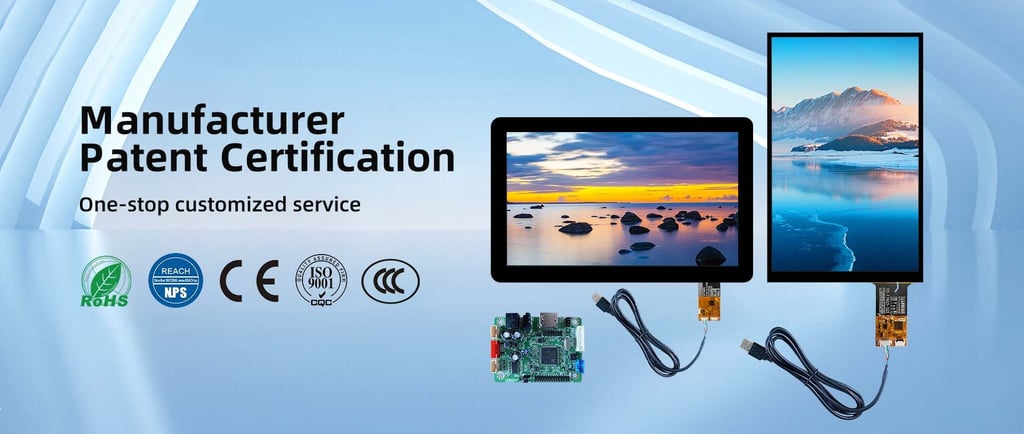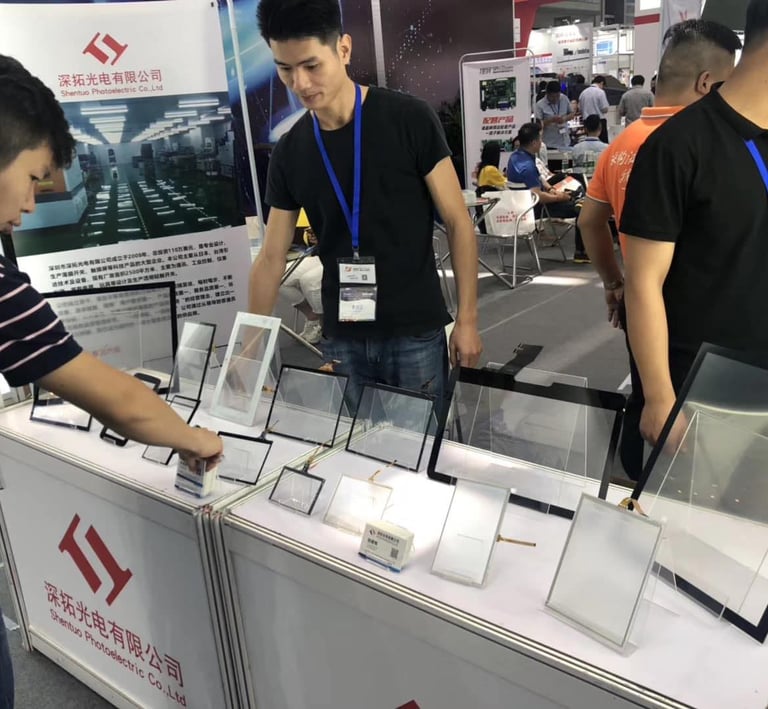EMC Compliance in Industrial Touch Screens: Why It Matters and How to Achieve It
Imagine this: You’ve installed a state-of-the-art industrial touch screen in your factory, only to find it malfunctioning due to electromagnetic interference (EMI) from nearby equipment. Frustrating, right? This is where EMC compliance comes into play. In this article, we’ll explore why EMC compliance is crucial for industrial touch screens and how you can ensure your devices meet the necessary standards.
3/6/20252 min read


1. What is EMC Compliance?
EMC (Electromagnetic Compatibility) compliance ensures that electronic devices can operate without causing or being affected by electromagnetic interference. For industrial touch screens, this means:
Immunity: The touch screen can function properly in environments with high EMI.
Emissions: The touch screen does not emit excessive electromagnetic radiation that could disrupt other devices.
2. Why is EMC Compliance Important?
Reliability: Ensures consistent performance in industrial environments with heavy machinery and high EMI.
Safety: Prevents malfunctions that could lead to accidents or production downtime.
Regulatory Requirements: Many industries require EMC compliance for certification and approval.
3. Common EMC Challenges for Industrial Touch Screens
Electrical Noise: Interference from motors, power supplies, and other equipment.
Radio Frequency Interference (RFI): Disruptions from wireless devices and communication systems.
Grounding Issues: Poor grounding can exacerbate EMI problems.
4. How to Achieve EMC Compliance
Here’s a step-by-step guide to ensuring your industrial touch screens are EMC compliant:
Step 1: Design with EMC in Mind
Shielding: Use shielded cables and enclosures to block EMI.
Filtering: Add filters to power and signal lines to reduce noise.
Layout: Optimize PCB layout to minimize electromagnetic emissions.
Step 2: Choose EMC-Compliant Components
Touch Screens: Select touch screens designed for industrial environments with built-in EMC protection.
Accessories: Use EMC-compliant power supplies, cables, and connectors.
Step 3: Conduct Rigorous Testing
Pre-Compliance Testing: Identify and address potential issues early in the design phase.
Full Compliance Testing: Perform tests in accredited labs to verify compliance with standards like IEC 61000.
Step 4: Implement Best Practices
Proper Grounding: Ensure all equipment is properly grounded to reduce EMI.
Cable Management: Use shielded cables and keep them away from high-EMI sources.
Regular Maintenance: Inspect and maintain equipment to prevent EMC issues over time.
5. Real-World Applications of EMC-Compliant Touch Screens
Factory Automation:
Touch screens in automotive assembly lines withstand EMI from welding machines and robotic arms.
Medical Devices:
EMC-compliant touch screens in MRI machines operate reliably despite high electromagnetic fields.
Energy Sector:
Touch screens in power plants remain functional despite interference from high-voltage equipment.
Why Choose STouch Display for EMC-Compliant Touch Screens?
At STouch Display, we specialize in designing touch screens that meet the highest EMC standards. Our products are rigorously tested to ensure reliable performance in even the most challenging industrial environments.
Conclusion
EMC compliance is not just a regulatory requirement—it’s a critical factor in ensuring the reliability and safety of your industrial touch screens. By following best practices and partnering with a trusted supplier like STouch Display, you can avoid costly downtime and ensure your operations run smoothly.
Ready to explore EMC-compliant touch screen solutions? Contact STouch Display today to discover how we can help you achieve your goals!
Get in touch
Reach out for customized touch display solutions and inquiries.


Display Solutions
Custom touch displays for industrial and medical solutions Specific to Your Needs.
Quality First
Expert in touch panels
15 Years in Touch Solutions | Your One-Stop-Manufacturer | STOUCH © 2024. All rights reserved.
